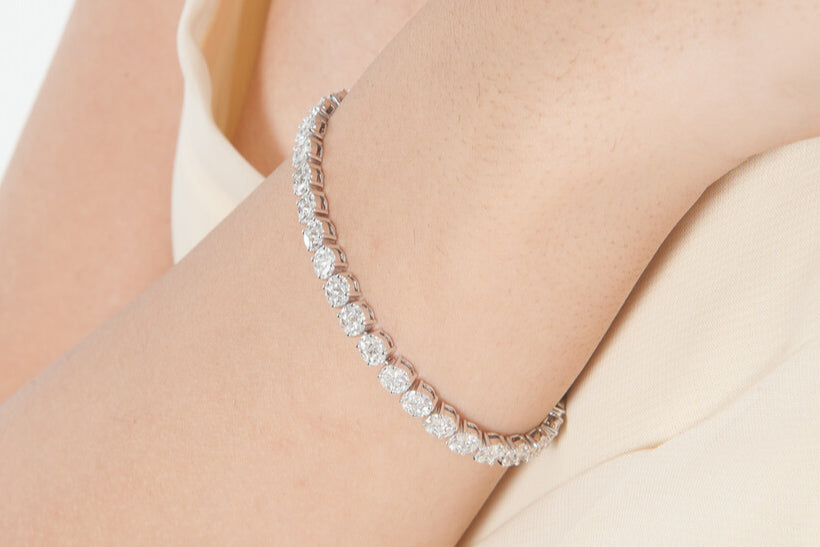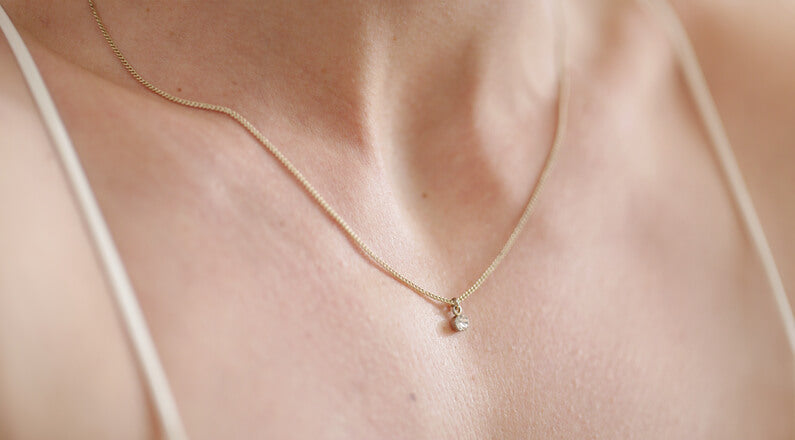Moissanite vs. diamond
Share
Moissanite vs. Diamond: A Comparison of the Two Gemstones
When it comes to selecting the perfect gemstone for an engagement ring or piece of fine jewelry, the age-old debate between moissanite and diamond often comes to the forefront. While diamonds have long held the title of being the most coveted and precious of gemstones, moissanite has been steadily gaining popularity as a more affordable and ethical alternative. In this blog post, we'll dive deep into the world of moissanite and diamond, comparing their key features and discussing the reasons why you might choose one over the other.
The Origin and Formation of Moissanite and Diamonds
Moissanite was first discovered in 1893 by French chemist Henri Moissan, who found microscopic particles of the gemstone in a meteor crater in Arizona. The mineral he discovered was silicon carbide, a compound that is extremely rare in nature. Today, almost all moissanite on the market is lab-created, making it an environmentally friendly and conflict-free option for jewelry.
On the other hand, diamonds are formed deep within the Earth's mantle under extreme heat and pressure, and are composed of pure carbon. Over millions of years, volcanic activity brings diamonds to the Earth's surface, where they are mined. The diamond industry has faced criticism for its environmental impact and the unethical practices associated with some mining operations.
Appearance and Brilliance
Both moissanite and diamond are clear, colorless gemstones with incredible brilliance, making them ideal choices for engagement rings and other jewelry pieces. The refractive index (RI) of a gemstone determines its ability to bend and reflect light, which contributes to its overall sparkle. Moissanite boasts a higher RI (2.65-2.69) than diamond (2.42), giving it even more fire and brilliance.
Moissanite also exhibits double refraction, meaning that light entering the stone is split into two rays, creating a more dramatic sparkle. However, this characteristic can sometimes result in a slight "disco-ball" effect, which may not be to everyone's taste.
Durability and Hardness
Both gemstones are incredibly durable and suitable for daily wear. Diamonds are the hardest known natural substance, scoring a 10 on the Mohs scale of hardness. Moissanite, on the other hand, comes in at an impressive 9.25, making it harder than most other gemstones and only slightly softer than a diamond.
While diamonds are more resistant to scratching and chipping, moissanite's hardness ensures that it will maintain its brilliance and beauty for years to come.
Price and Affordability
One of the most significant differences between moissanite and diamond is the price. Moissanite is considerably more affordable, often costing only a fraction of the price of a comparable diamond. This makes it an attractive option for those looking to purchase a stunning gemstone without breaking the bank.
The cost of a diamond is influenced by factors such as carat weight, cut, color, and clarity. As the size and quality of a diamond increase, so does its price. In contrast, the price of moissanite does not rise as steeply with size, making it a more cost-effective option for those seeking larger gemstones.
Ethical Considerations
As previously mentioned, the diamond industry has been criticized for its environmental impact and the unethical practices associated with some mining operations. In response, the industry has made strides in recent years to improve transparency and ensure ethical sourcing.
Lab-created diamonds have also emerged as an alternative for those seeking an ethical and environmentally friendly option. However, these diamonds tend to be more expensive than moissanite.
Since moissanite is primarily lab-created, it is inherently more environmentally friendly and conflict-free. This makes it an appealing choice for those


